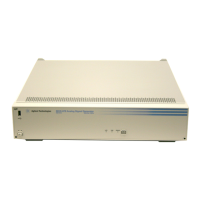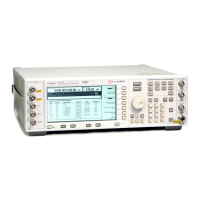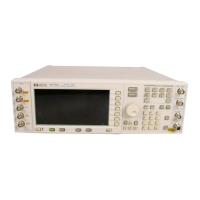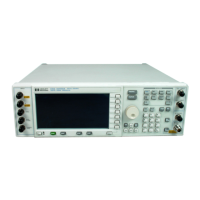Agilent N5181A/82A MXG Signal Generators SCPI Command Reference 5
SCPI Basics
SCPI Basics
Command Types
Commands can be separated into two groups: common commands and subsystem commands. Figure
1- 1, shows the separation of the two command groups.
Common commands are used to manage status registers, synchronization, and data storage and are
defined by IEEE 488.2. They are easy to recognize because they all begin with an asterisk. For
example *IDN?, *OPC, and *RST are common commands. Common commands are not part of any
subsystem and the signal generator interprets them in the same way, regardless of the current path
setting.
Subsystem commands are distinguished by the colon (:). The colon is used at the beginning of a
command statement and between keywords, as in :FREQuency[:CW?]. Each command subsystem is a
set of commands that roughly correspond to a functional block inside the signal generator. For
example, the power subsystem (:POWer) contains commands for power generation, while the status
subsystem (:STATus) contains commands for controlling status registers.
Lower- case lettering indicates the portion of the command that
is optional; it can either be included with the upper- case portion
of the command or omitted. This is the flexible format principle
called forgiving listening. Refer to “Command Parameters and
Responses” on page 7 for more information.
:FREQuency
Either :FREQ, :FREQuency, or :FREQUENCY
is correct.
When a colon is placed between two command mnemonics, it
moves the current path down one level in the command tree.
Refer to “Command Tree” on page 6 more information on
command paths.
:TRIGger:OUTPut:POLarity?
TRIGger is the root level keyword for this
command.
If a command requires more than one parameter, you must
separate adjacent parameters using a comma. Parameters are not
part of the command path, so commas do not affect the path
level.
[:SOURce]:LIST:
DWELl <value>{,<value>}
A semicolon separates two commands in the same program
message without changing the current path.
:FREQ 2.5GHz;:POW 10dBm
White space characters, such as <tab> and <space>, are
generally ignored as long as they do not occur within or between
keywords.
However, you must use white space to separate the command
from the parameter, but this does not affect the current path.
:FREQ uency or :POWer :LEVel are not
allowed.
A <space> between :LEVel and 6.2 is
mandatory.
:POWer:LEVel 6.2
Table 1-2 Command Syntax
Characters, Keywords, and Syntax Example
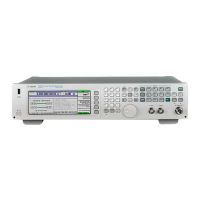
